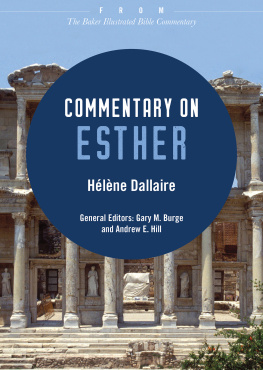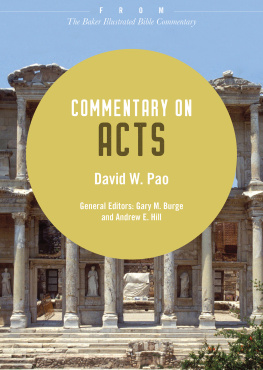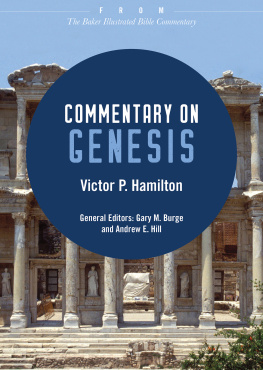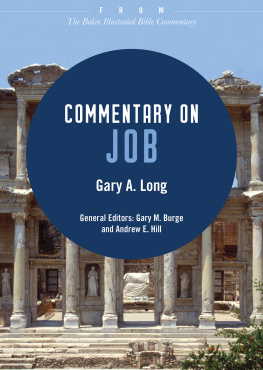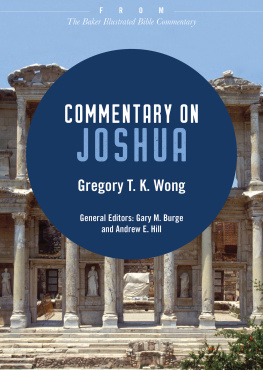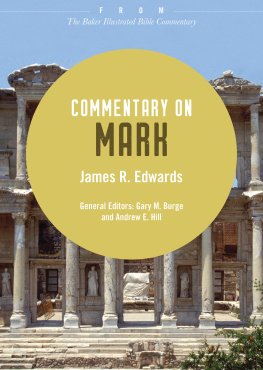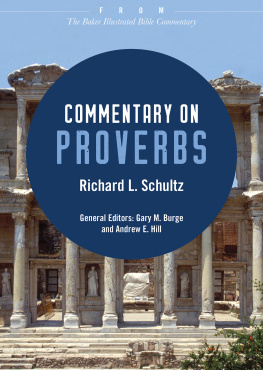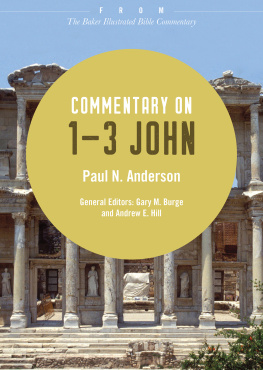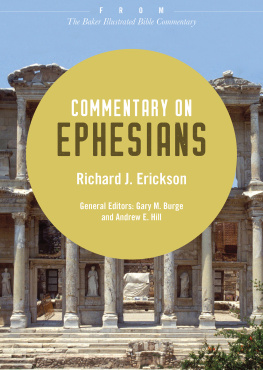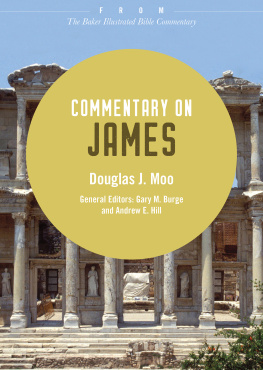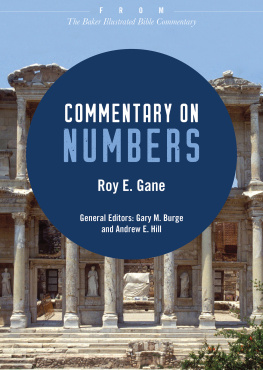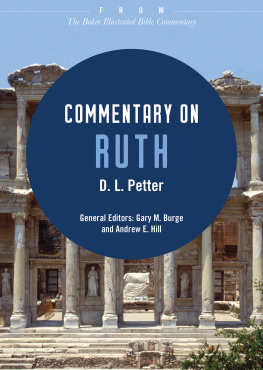Copyright Page
2012 by Baker Publishing Group
Published by Baker Books
a division of Baker Publishing Group
P.O. Box 6287, Grand Rapids, MI 49516-6287
www.bakerbooks.com
Ebook short created 2019
Previously published in The Baker Illustrated Bible Commentary edited by Gary M. Burge and Andrew E. Hill in 2012
All rights reserved. No part of this publication may be reproduced, stored in a retrieval system, or transmitted in any form or by any meansfor example, electronic, photocopy, recordingwithout the prior written permission of the publisher. The only exception is brief quotations in printed reviews.
Library of Congress Cataloging-in-Publication Data is on file at the Library of Congress, Washington, DC.
ISBN 978-1-4934-2451-1
Unless otherwise indicated, Scripture quotations are from the Holy Bible, New International Version. NIV. Copyright 1973, 1978, 1984, 2011 by Biblica, Inc. Used by permission of Zondervan. All rights reserved worldwide. www.zondervan.com. The NIV and New International Version are trademarks registered in the United States Patent and Trademark Office by Biblica, Inc.
Scripture quotations labeled ESV from The Holy Bible, English Standard Version (ESV), copyright 2001 by Crossway, a publishing ministry of Good News Publishers. Used by permission. All rights reserved. ESV Text Edition: 2007
Scripture quotations labeled NASB are from the New American Standard Bible, copyright 1960, 1962, 1963, 1968, 1971, 1972, 1973, 1975, 1977, 1995 by The Lockman Foundation. Used by permission. www.lockman.org
Scripture quotations labeled NIV 1984 are from the HOLY BIBLE, NEW INTERNATIONAL VERSION. NIV. Copyright 1973, 1978, 1984 by International Bible Society. Used by permission of Zondervan. All rights reserved.
Scripture quotations labeled NJPS are from the New Jewish Publication Society Version 1985 by The Jewish Publication Society. All rights reserved.
Scripture quotations labeled NKJV are from the New King James Version. Copyright 1982 by Thomas Nelson, Inc. Used by permission. All rights reserved.
Scripture quotations labeled NLT are from the Holy Bible , New Living Translation, copyright 1996, 2004, 2007 by Tyndale House. Used by permission of Tyndale House Publishers, Inc., Carol Stream, Illinois 60188. All rights reserved.
Scripture quotations labeled NRSV are from the New Revised Standard Version of the Bible, copyright 1989, by the Division of Christian Education of the National Council of the Churches of Christ in the United States of America. Used by permission. All rights reserved.
Scripture quotations labeled RSV are from the Revised Standard Version of the Bible, copyright 1952 [2nd edition, 1971] by the Division of Christian Education of the National Council of the Churches of Christ in the United States of America. Used by permission. All rights reserved.
Unless otherwise indicated, photos, illustrations, and maps are copyright Baker Photo Archive.
Contents
Abbreviations
| ANET | Ancient Near Eastern Texts Relating to the Old Testament . Edited by J. B. Pritchard. 3rd ed. Princeton, 1969 |
| BDAG | Bauer, W., F. W. Danker, W. F. Arndt, and F. W. Gingrich. Greek-English Lexicon of the New Testament and Other Early Christian Literature. 3rd ed. Chicago, 1999 |
| ca. | circa (about, approximately) |
| cf. | compare |
| chap(s). | chapter(s) |
| COS | The Context of Scripture . Edited by W. W. Hallo. 3 vols. Leiden, 1997 |
| e.g. | for example |
| ESV | English Standard Version |
| HALOT | Koehler, L., W. Baumgartner, and J. J. Stamm. The Hebrew and Aramaic Lexicon of the Old Testament. Translated and edited under the supervision of M. E. J. Richardson. 5 vols. Leiden, 19942000 |
| HCSB | Holman Christian Standard Bible |
| i.e. | that is |
| KJV | King James Version |
| NASB | New American Standard Bible |
| NEB | New English Bible |
| NET | New English Translation |
| NIV | New International Version (2011 edition) |
| NIV 1984 | New International Version (1984 edition) |
| NJB | New Jerusalem Bible |
| NJPS | The Tanakh: The Holy Scriptures: The New JPS Translation according to the Traditional Hebrew Text |
| NKJV | New King James Version |
| NLT | New Living Translation |
| NRSV | New Revised Standard Version |
| RSV | Revised Standard Version |
| TDOT | Theological Dictionary of the Old Testament . Edited by G. J. Botterweck and H. Ringgren. Translated by J. T. Willis, G. W. Bromiley, and D. E. Green. 8 vols. Grand Rapids, 1974 |
| TNIV | Todays New International Version |
Esther
Hlne Dallaire
Introduction
The book of Esther, one of two biblical books highlighting a female character, provides the story of a young Jewish girl named Hadassah (Esther), who lives among the Jewish diaspora in Persia. Esther plays a major role in the deliverance of the Jews who were destined to be destroyed and annihilated at the hand of the evil Haman. Also central to the narrative is her cousin Mordecai, whose discovery of Hamans plot to annihilate the Jews is pivotal. Mordecais rise from common man to nobility is one of several examples of role reversal, where the underdog unexpectedly becomes the hero of the story.
Ahasuerus, the Persian king, is also important to the story line; he consistently allows nobles in the royal palace to influence his decisions, causing him to vacillate and waver on matters related to ruling the kingdom. Early in the story his wife, Queen Vashti, is deposed from her royal throne after refusing to attend her inebriated husbands banquet where her exquisite beauty was to be displayed before the guests. Her overthrow gives place for Esther to enter the scene and to become Gods instrument of deliverance.
Esthers story testifies to Gods sovereignty and his faithfulness to deliver his people wherever they may bein the promised land or in exile. Though God is never mentioned by name in this book, the reader encounters God at every turn. No event in the narrative is coincidental; every segment is divinely orchestrated, and in the end, God is glorified.
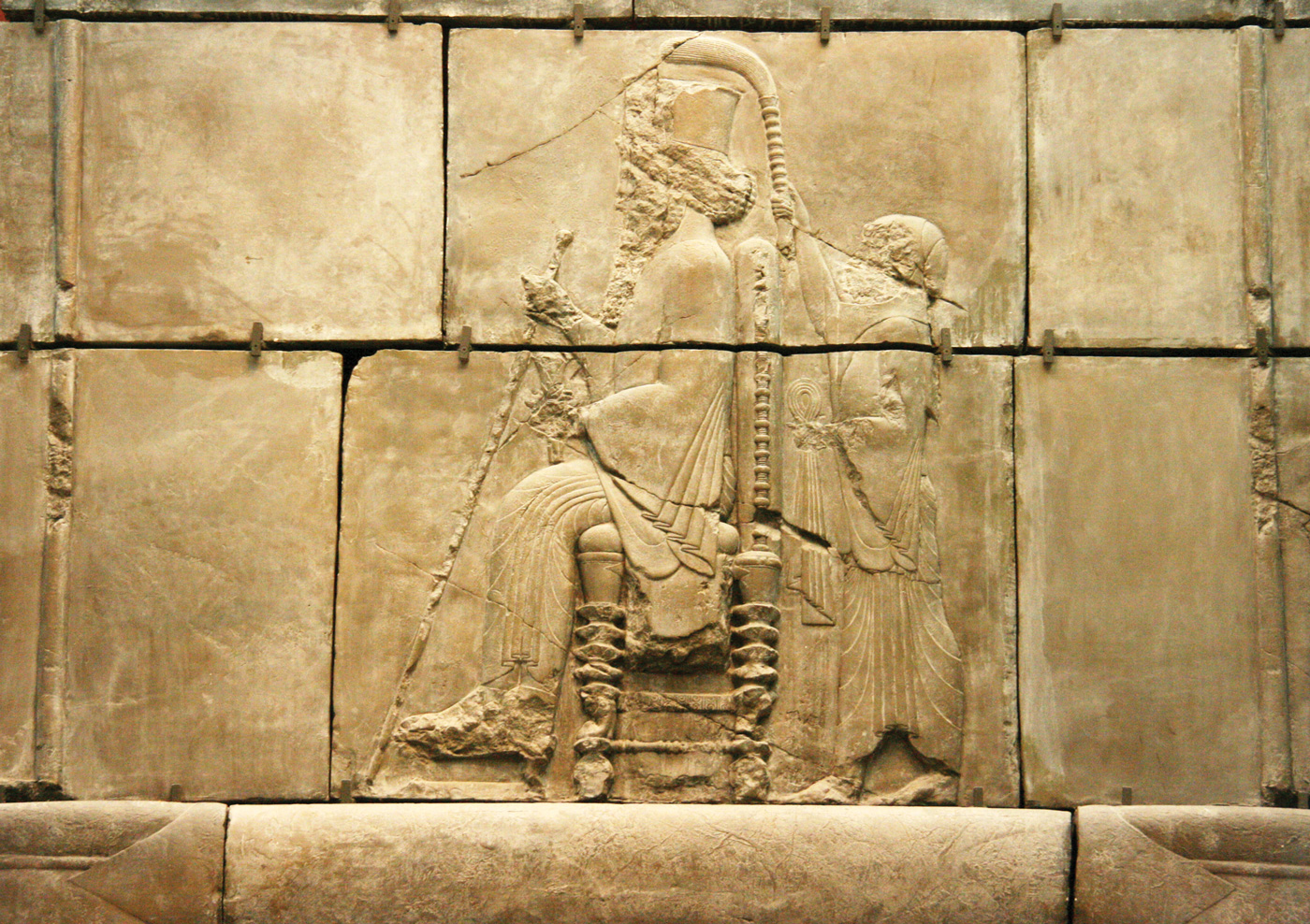
[ Copyright Baker Photo Archive. Courtesy of the British Museum. ]
Historical Context
The story of Esther takes place during the reign of Ahasuerus of Persia, between the years 486 and 465 BC, after King Cyrus had allowed the Jews to return to their homeland and to rebuild the temple in Jerusalem (538 BC). Scholars views on the dating of the book range from mid-fifth to mid-third centuries BC. Those who advocate for an early date point to (1) the presence of Persian loan words and the scarcity of Greek words, (2) the authors familiarity with the geography of Susa, and (3) the close similarities between the Hebrew of Esther and the language of Chronicles. Advocates for a late date suggest that the opening statement, This is what happened during the time of Xerxes, the Xerxes who ruled over 127 provinces, places the author at a temporal vantage point removed from the events. Also noted is the lack of interest in the land of Israel and the absence of religious practices, features that distance the story from the events of Ezra and Nehemiah.

